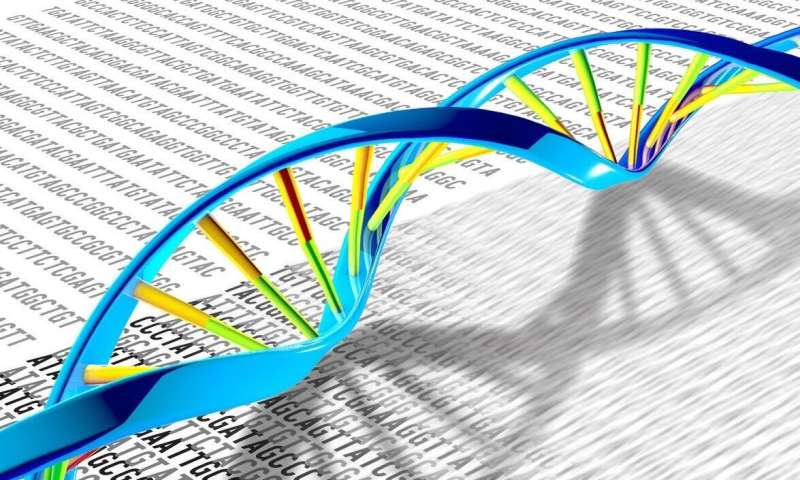Researchers decode tertiary structure of DNA aptamer鈥揂TP complex and improve binding affinity

Sadie Harley
scientific editor

Robert Egan
associate editor

DNA aptamers are powerful molecular tools in biosensing, bioimaging and therapeutics. However, a limited understanding of their tertiary structures and binding mechanisms hinders their further optimizations and applications.
Adenosine triphosphate (ATP), a central metabolite in cellular energy metabolism, is a key target for aptamer development. A DNA aptamer 1301b has recently been reported to bind to one molecule of ATP with a dissociation constant (KD) of ~2.5 碌M. However, the structural basis for ATP recognition by 1301b remains unclear, lacking guiding principles for rational optimization.
In a study published in , a team led by Prof. Tan Weihong, Prof. Han Da, and Prof. Guo Pei from the Hangzhou Institute of Medicine (HIM) of the Chinese Academy of Sciences determined the tertiary structure of a DNA aptamer-ATP 1:1 binding complex, revealed the recognition mechanism, and engineered an optimized DNA aptamer with a submicromolar KD for ATP binding, which exhibited the highest affinity reported for ATP-binding DNA aptamers to date.
Researchers determined the solution to nuclear magnetic resonance (NMR) structures of a shortened variant, 1301b_v1, in complex with ATP. The structure showed an "L"-shaped architecture, where ATP intercalates into the binding pocket formed by two internal loops, as stabilized by hydrogen bonding with guanine and stacking interactions with neighboring bases.
In addition, researchers showed that Mg2+ ions facilitate 1301b_v1 to form a semi-folded structure and further stabilize the binding complex by neutralizing the negatively charged phosphate groups of DNA and ATP, which demonstrated that the aptamer recognizes ATP through an adaptive recognition mechanism.
Moreover, researchers introduced 2'-O-methyl modifications to key residues in the central junction, significantly improving the binding affinity and reducing the reliance on Mg2+ ions. The optimized variant achieved a submicromolar KD of ~0.7 渭M and retained the specificity for ATP.
This work demonstrates DNA's untapped potential to form intricate tertiary folds, and it provides new insights into the design of high-performance DNA molecular tools which can be applied in areas such as diagnostics and targeted therapeutics.
More information: Yan Jiang et al, Structural basis and affinity improvement for an ATP-binding DNA aptamer, Proceedings of the National Academy of Sciences (2025).
Journal information: Proceedings of the National Academy of Sciences
Provided by Chinese Academy of Sciences
















